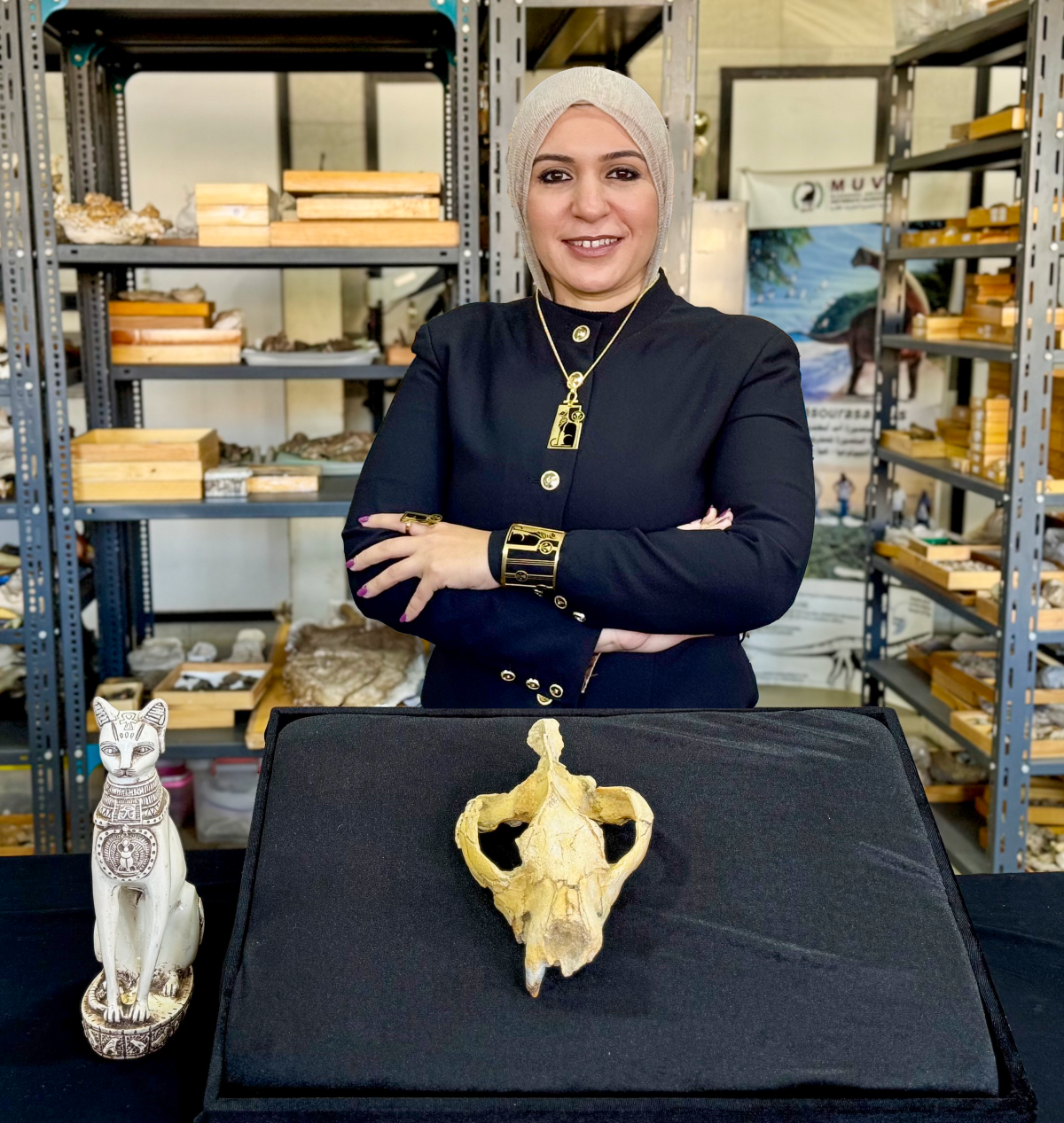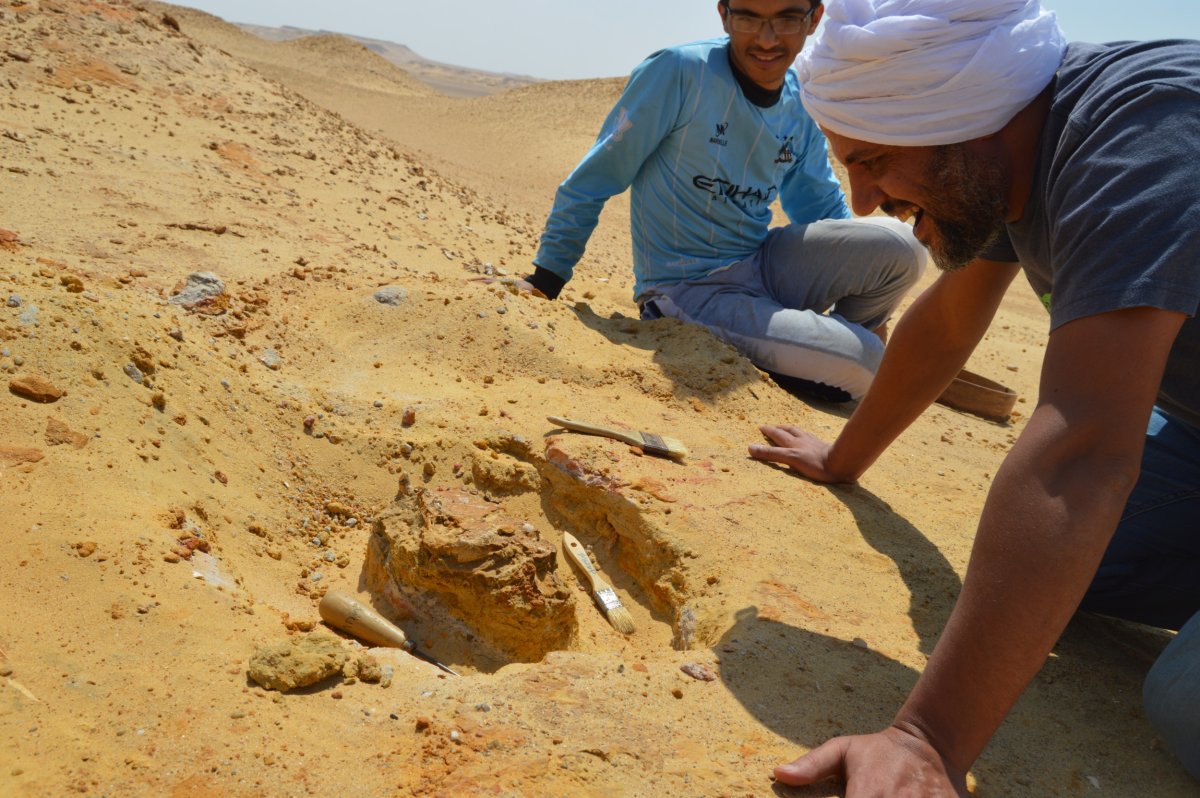-
9th Circuit clears Grindr in child sex trafficking case - about 1 min ago
-
Girl, 4, Teaches Little Sister About ‘Healthy Boundaries’ - 6 mins ago
-
College basketball weekend preview: Top five matchups to tune into Saturday - 26 mins ago
-
Heart-wrenching opening for trial of O.C. judge who fatally shot wife - 41 mins ago
-
DOGE Stimulus Check Creator Wants it to Motivate People to Report Waste - 45 mins ago
-
Body of Shiri Bibas handed over; release of six more hostages underway - 49 mins ago
-
Eagles LB Nolan Smith played through Super Bowl LIX with torn triceps - about 1 hour ago
-
Taylor Swift’s ‘It Ends With Us’ connection uncovered in resurfaced interview - about 1 hour ago
-
Map Reveals How Obesity Rates in the U.S Compares to Europe - about 1 hour ago
-
In reversal, Trump says Russia attacked Ukraine - 2 hours ago
‘Fearsome’ New Leopard-Sized Predator From 30 Million Years Ago Revealed
Paleontologists have discovered a new species of a “fearsome” leopard-sized predator that would have ruled the lush forests of Egypt some 30 million years ago.
A largely complete fossil skull of the “Bastetodon syrtos“—replete with evidence of sharp teeth and powerful jaw muscles—was found in what is today the desert near the city of Fayum by paleontologist Hesham Sallam and his colleagues.
“Just as we were about to conclude our work, a team member spotted something remarkable—a set of large teeth sticking out of the ground,” paper author Shorouq Al-Ashqar, a paleontologist in the Sallam Lab at Egypt’s Mansoura University, said in a statement. “His excited shout brought the team together, marking the beginning of an extraordinary discovery: a nearly complete skull of an ancient apex carnivore, a dream for any vertebrate paleontologist.”
The team named the new genus Bastetodon partly in reference to the cat-headed ancient Egyptian goddess Bastet, in honor of where the specimen was unearthed and of the feline-like snout of the ancient predator. The second part of the name, “-odon”, means tooth.
Bastetodon is an example of an extinct group of predatory mammals known as the hyaenodonts, which evolved long before modern-day carnivores like cats, dogs and hyenas.
Despite their name, they are not actually related to modern day hyenas, although they do sport similar teeth. The Hyaenodonts dominated the ecosystems of Africa after the extinction of the dinosaurs.
According to the researchers, Bastetodon—which lived back when our own monkey-like ancestors were evolving—likely preyed on such animals as primates, early elephants, early hippopotamuses and plump, furry mammals known as hyraxes.
The new species was found in rocks that outcrop in the Fayum Depression, an area that offers a geological window onto some 15 million years of evolutionary history—a period that includes a shift from the warming climate of the Eocene (which lasted from 56–33.9 million years ago) to the cooling of the Oligocene (33.9 to 23 million years ago).
Ahmad Morsi
“The Fayum is one of the most important fossil areas in Africa,” paper co-author and evolutionary anthropologist professor Matt Borths of North Carolina’s Duke University said in a statement.
He added: “Without it, we would know very little about the origins of African ecosystems and the evolution of African mammals like elephants, primates and hyaenodonts. Paleontologists have been working in the Fayum for over a century, but the Sallam Lab demonstrated there is more to discover in this remarkable region.”
The Bastetodon skull’s finding has also helped the researchers shine fresh light on a related group of lion-sized hyaenodonts first unearthed in Fayum more than 120 years ago.
Based on their analysis, the team has described a new genus—”Sekhmetops,” after the lion-headed ancient Egyptian goddess of war—with two species, S. phiomensis and S. africanus.

Professor Hesham Sallam
After the first specimen was discovered back in 1904, the now Sekhmetops species was placed within a European group of hyaenodonts.
Now, however, the researchers propose that the Bastetodon and Sekhmetops instead belonged to a group of hyaenodonts that originated in Africa.
Relatives of Bastetodon and Sekhmetops, the Sallam Lab argues, spread out from Africa in multiple waves—eventually making it to Europe, Asia, India and even as far as North America, with some evolving to become among the largest carnivorous mammals ever.
However, radical tectonic and climatic shifts ultimately saw these specialized predators decline into extinction—to be replaced by the relatives of today’s cats, dogs and hyenas.
“The discovery of Bastetodon is a significant achievement in understanding the diversity and evolution of hyaenodonts and their global distribution,” Al-Ashqar added. “We are eager to continue our research to unravel the intricate relationships between these ancient predators and their environments over time and across continents.”
Do you have a tip on a science story that Newsweek should be covering? Do you have a question about paleontology? Let us know via science@newsweek.com.
Reference
Al-Ashqar, S. F., Borths, M., El-Desouky, H., Heritage, S., Abed, M., Seiffert, E. R., El-Sayed, S., & Sallam, H. M. (2025). Cranial anatomy of the hypercarnivore Bastetodon syrtos gen. nov. (Hyaenodonta, Hyainailourinae) and a reevaluation of Pterodon in Africa. Journal of Vertebrate Paleontology. https://doi.org/10.1080/02724634.2024.2442472

Professor Hesham Sallam
Source link































